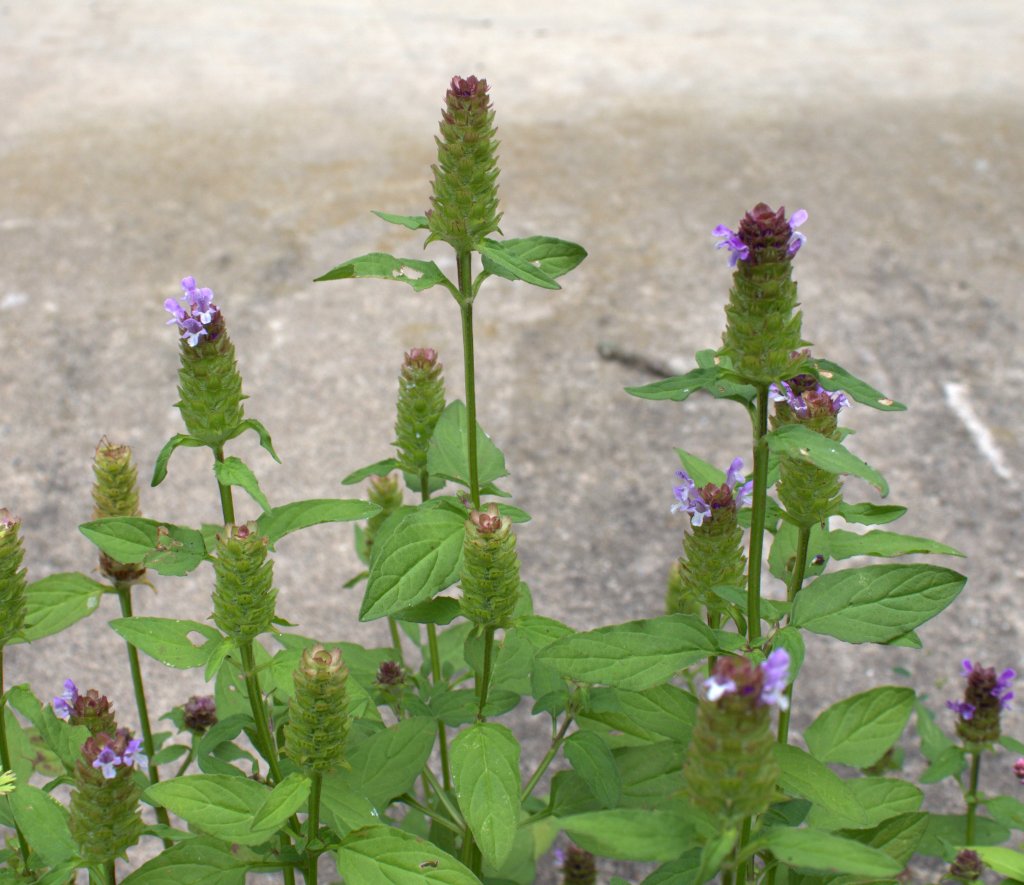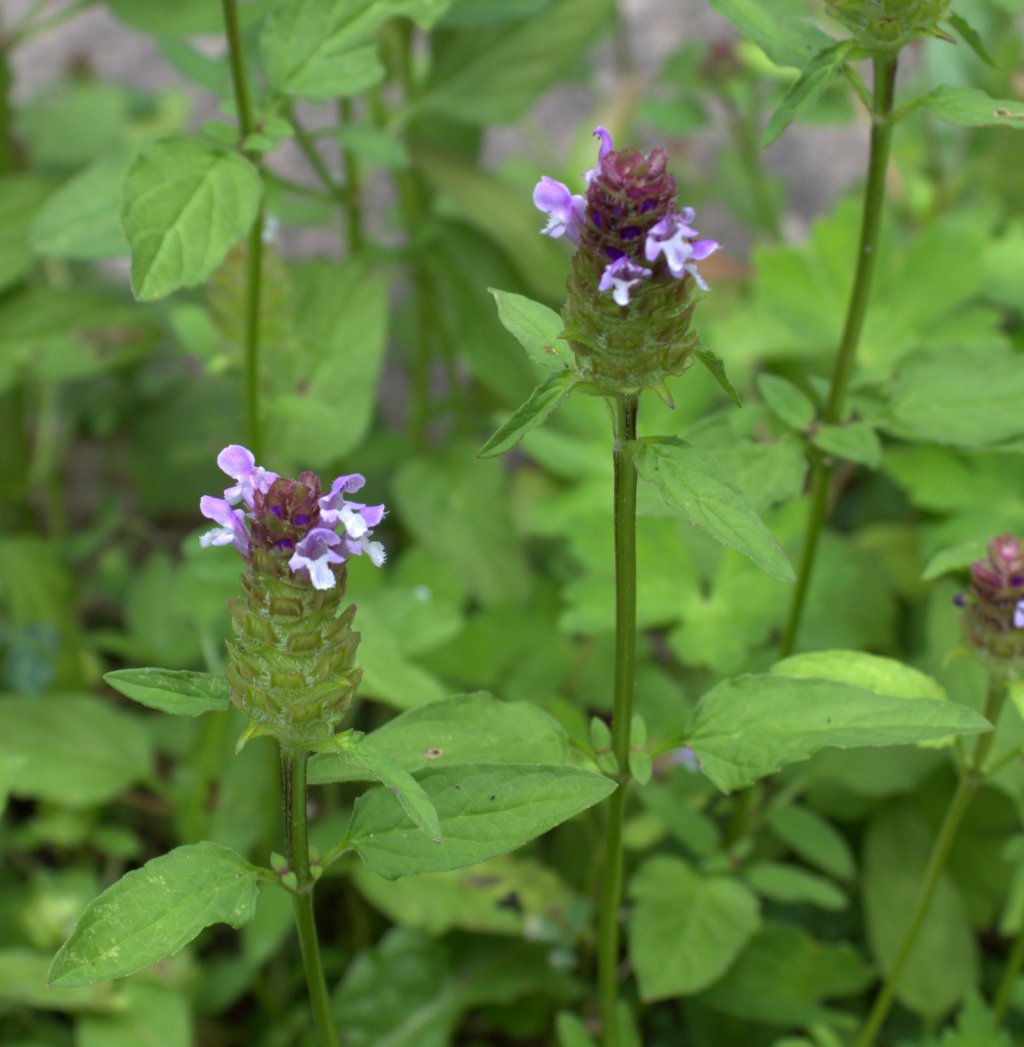When you don’t use herbicides to kill “weeds” in your lawn, you never know what might come up. I enjoy knowing that we don’t add to the pollution that kills by indiscriminate spraying of nasty chemicals.
I also enjoy the surprise of finding new and interesting plants – and insects – that show up unannounced.
Heal All is one such plant. It appears in various places in the yard and since it can be used for a healing tea, I say, “Let it grow!”
Heal All, Prunella vulgaris, is native to North America occurring in all 50 of the United States and most of the provinces of Canada. It’s a member of the Mint family, Lamiaceae.

Another common name for heal all is common self-heal which suggests
a long history of use as a medicinal herb.

According to Duke’s Handbook of Edible Weeds, Self-Heal is a good source of antioxidants and immune-boosting properties. It’s edible and can be eaten raw or cooked.
We’ll harvest this healing weed in places before the lawn mower cuts it back, although it’s a tough mint relative that will continue to grow despite being cut back.
The harvested snips of heal all will be dried and kept in glass jars in a cupboard for future use.